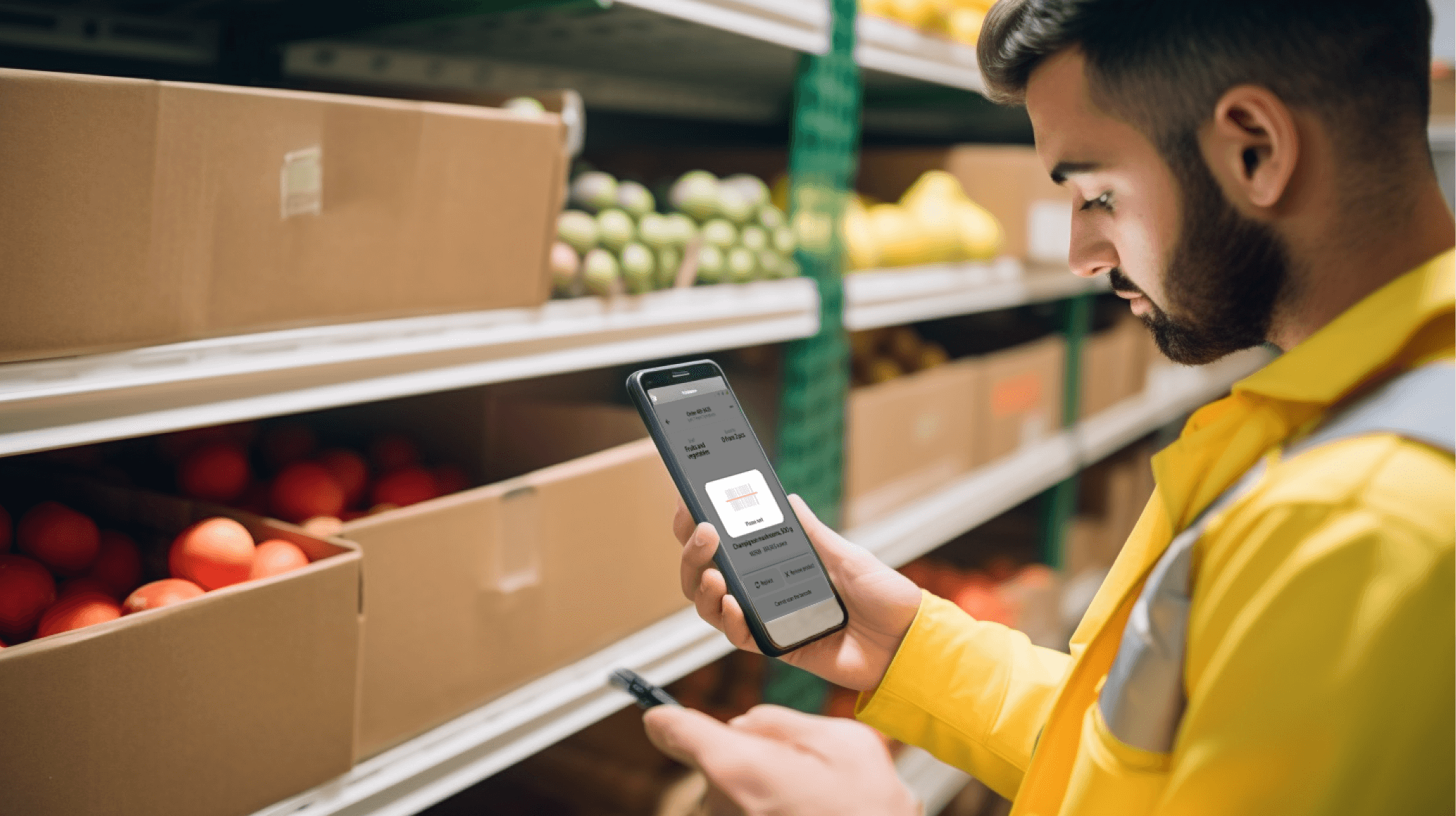Yango Tech and Surtifamiliar Partner for Next-Generation AI-Powered Grocery E-commerce in Colombia


Digital transformation has become an essential part of the retail industry, particularly in grocery stores, where the pressure to adapt to changing consumer expectations is intense. As the retail market evolves, grocery stores must integrate new technologies to remain competitive, enhance the customer experience, and streamline operations.
Statista reports that by the end of 2024, the global grocery delivery market is set to achieve a revenue of US$770.90bn and continue growth at a robust rate (CAGR) of 11.81% until 2029.
Let's uncover how digital transformation is applied within groceries in 2024, what are its benefits, and what key trends to adopt.
Digital transformation offers numerous benefits to grocery stores, driving innovation, efficiency, and customer satisfaction.
Enhanced Customer Experience
One of the primary advantages of digital transformation is the improvement in the customer experience. By leveraging data analytics and AI, grocery stores can gain insights into customer behavior and preferences, allowing for personalized shopping experiences. Mobile apps, for instance, can provide customers with tailored discounts, shopping lists, and recommendations based on previous purchases. This level of personalization helps retailers build stronger relationships with their customers, ultimately leading to increased customer loyalty and sales.
To read how to apply personalization in 2024, check out Yango Tech’s interview with K Radhakrishnan: 5 Winning Personalization Strategies in Grocery.

Increased Operational Efficiency
Digital transformation also enhances operational efficiency by automating various processes, from inventory management to checkout. Technologies such as RFID tags, AI-powered analytics, and automated checkout systems reduce manual labor and errors, allowing staff to focus on more value-added tasks. These efficiencies not only reduce costs but also improve the overall shopping experience for customers by minimizing wait times and ensuring product availability.
Better Data Management and Insights
The use of data in grocery stores is critical for making informed decisions. Digital transformation enables retailers to collect, analyze, and act on large volumes of data. With advanced analytics tools, grocery stores can forecast demand, optimize inventory levels, and identify trends that impact sales. This data-driven approach leads to more accurate pricing strategies, targeted marketing campaigns, and improved customer satisfaction.
Adapting to New Consumer Expectations
As more consumers turn to online shopping, grocery stores must adapt to these changing expectations. Digital transformation allows retailers to offer omnichannel experiences, where customers can shop seamlessly across online and offline channels. Features like click-and-collect, curbside pickup, and home delivery have become essential components of the modern grocery shopping experience. By meeting these new consumer demands, grocery stores can stay competitive in a rapidly changing market.
Cost Optimization
While the initial investment in digital transformation can be significant, the long-term benefits often outweigh the costs. Automation and data-driven decision-making lead to cost savings in areas such as labor, inventory management, and marketing. Cloud computing, for instance, offers scalable solutions that reduce the need for expensive on-site infrastructure. Over time, these cost optimizations contribute to higher profitability for grocery stores.
Digital transformation in grocery stores is driven by several key technologies that enhance both the customer experience and operational efficiency.
Artificial Intelligence (AI)
AI plays a crucial role in digital transformation, particularly in areas such as personalized marketing, demand forecasting, and inventory management. AI-powered chatbots can assist customers with product recommendations, answer queries, and provide real-time support. Additionally, AI algorithms analyze large datasets to predict trends and optimize pricing strategies, helping grocery stores stay ahead of the competition.
Big Data Analytics
Big data analytics allows grocery stores to process vast amounts of data from various sources, such as point-of-sale systems, customer loyalty programs, and online shopping platforms. By analyzing this data, retailers can gain insights into customer preferences, optimize product assortments, and develop targeted marketing campaigns. Big data also enables real-time inventory tracking, ensuring that popular items are always in stock.
Internet of Things (IoT)
IoT devices, such as smart shelves and connected refrigerators, provide real-time data on inventory levels and product freshness. These devices help grocery stores manage their stock more efficiently, reducing waste and ensuring that customers have access to fresh produce. IoT also plays a role in enhancing the in-store experience by providing customers with information on product availability and personalized offers as they shop.

Blockchain Technology
Blockchain technology offers a secure and transparent way to manage supply chains, ensuring that products are sourced and delivered with integrity. In the grocery industry, blockchain can be used to track the journey of perishable goods from farm to store, providing consumers with greater transparency and trust in the products they purchase. This technology also helps prevent fraud and ensures compliance with industry regulations.
Mobile Applications
Mobile apps have become a vital tool in the digital transformation of grocery stores. These apps offer customers a convenient way to shop, track orders, and access personalized offers. For grocery retailers, mobile apps provide a direct channel to engage with customers, collect data, and drive sales. Features such as push notifications, loyalty programs, and mobile payments enhance the shopping experience and encourage repeat business.
Cloud Computing
Cloud computing provides grocery stores with scalable and flexible IT solutions that can be easily adapted to changing business needs. By moving operations to the cloud, retailers can reduce the cost of maintaining on-site infrastructure and improve data security. Cloud-based systems also enable seamless integration of various digital tools, such as CRM systems, e-commerce platforms, and analytics software, facilitating a more efficient and cohesive operation.
While the benefits of digital transformation are clear, grocery stores face several challenges in implementing these technologies.
High Implementation Costs
One of the most significant challenges is the high cost of implementing digital transformation initiatives. From investing in new technologies to training staff, the initial expenses can be substantial. Small and medium-sized grocery stores may find it particularly difficult to allocate the necessary resources for digital transformation, potentially putting them at a competitive disadvantage.
Data Security and Privacy Concerns
As grocery stores collect more customer data, ensuring the security and privacy of this information becomes increasingly important. Data breaches can lead to significant financial losses, legal repercussions, and damage to the store's reputation. Implementing robust security measures, such as encryption, multi-factor authentication, and regular audits, is essential to protect sensitive data and maintain customer trust.
Resistance to Change
Digital transformation often requires a cultural shift within the organization, which can be met with resistance from employees. Long-standing processes and systems may need to be overhauled, leading to uncertainty and reluctance to adopt new technologies. Effective change management strategies, including clear communication, training, and support, are crucial to overcoming resistance and ensuring a smooth transition.

Complexity of Integration
Integrating new digital technologies with existing systems can be a complex and time-consuming process. Compatibility issues, data migration challenges, and the need for ongoing maintenance can all create obstacles during the digital transformation journey. Retailers must carefully plan and execute the integration process to minimize disruptions and ensure that all systems work together seamlessly.
Managing Fresh Produce
Grocery stores face unique challenges in managing fresh produce, which requires careful handling, timely delivery, and real-time inventory tracking. Digital transformation solutions must address these specific needs to ensure that perishable goods are managed efficiently. This includes leveraging IoT devices for temperature monitoring, AI for demand forecasting, and blockchain for supply chain transparency.
Several grocery stores have successfully implemented digital transformation strategies, demonstrating the potential benefits and challenges of these initiatives.
Case Study: Amazon Go
Amazon Go revolutionized the grocery shopping experience with its cashierless stores, which rely on a combination of AI, computer vision, and IoT to track customer purchases. By eliminating the need for checkout lines, Amazon Go offers a seamless and convenient shopping experience. This case study highlights the potential of digital transformation to redefine traditional retail models and meet evolving consumer expectations.
Case Study 2: Walmart
Walmart has been at the forefront of digital transformation in the grocery sector, investing in technologies such as AI, big data analytics, and mobile applications. Walmart's mobile app allows customers to shop online, track orders, and access personalized offers. The company has also implemented AI-powered robots for inventory management and IoT devices for real-time stock monitoring. Walmart's success demonstrates the importance of a comprehensive digital strategy that addresses both customer needs and operational efficiency.
Case Study 3: Tesco
Tesco has embraced digital transformation through its use of big data analytics and AI to enhance the customer experience. The company's Clubcard loyalty program collects data on customer preferences, allowing Tesco to offer personalized discounts and product recommendations. Tesco has also invested in online shopping platforms and mobile apps to provide a seamless omnichannel experience. This case study illustrates how data-driven decision-making can lead to increased customer satisfaction and sales.

To successfully implement digital transformation, grocery stores should consider the following strategies:
Develop a Clear Vision and Strategy
Before embarking on a digital transformation journey, grocery stores must develop a clear vision and strategy that aligns with their business goals. This includes identifying key areas for improvement, setting measurable objectives, and outlining a roadmap for implementation. A well-defined strategy ensures that all stakeholders are aligned and that the transformation efforts are focused on achieving the desired outcomes.
Invest in the Right Technologies
Choosing the right technologies is critical to the success of digital transformation initiatives. Grocery stores should carefully evaluate the available options and select technologies that address their specific needs, whether it's improving the customer experience, enhancing operational efficiency, or managing data more effectively. Partnering with experienced technology providers can also help ensure that the chosen solutions are implemented successfully.
Focus on Change Management
Effective change management is essential to overcoming resistance and ensuring that digital transformation is embraced throughout the organization. This includes providing training and support to employees, communicating the benefits of the transformation, and fostering a culture of innovation. By addressing the human aspect of digital transformation, grocery stores can ensure a smoother transition and greater buy-in from all stakeholders.
Prioritize Data Security
As grocery stores collect and process increasing amounts of data, prioritizing security is crucial. Implementing robust security measures, such as encryption, access controls, and regular audits, helps protect sensitive information and maintain customer trust. Grocery stores should also stay informed about the latest security threats and best practices to ensure that their data protection strategies remain effective.
Monitor and Adjust
Digital transformation is an ongoing process that requires continuous monitoring and adjustment
. Grocery stores should regularly evaluate the effectiveness of their digital initiatives, using data and analytics to identify areas for improvement. By remaining agile and responsive to changing market conditions and customer needs, grocery stores can ensure that their digital transformation efforts continue to deliver value.
Digital transformation in grocery stores offers significant benefits, including enhanced customer experiences, improved operational efficiency, and better data management. However, it also presents challenges, such as high implementation costs, data security concerns, and resistance to change.
By developing a clear strategy, investing in the right technologies, and focusing on change management, grocery stores can successfully navigate the digital transformation journey and remain competitive in a rapidly evolving market. As the retail industry continues to evolve, digital transformation will remain a critical factor in the success of grocery stores.